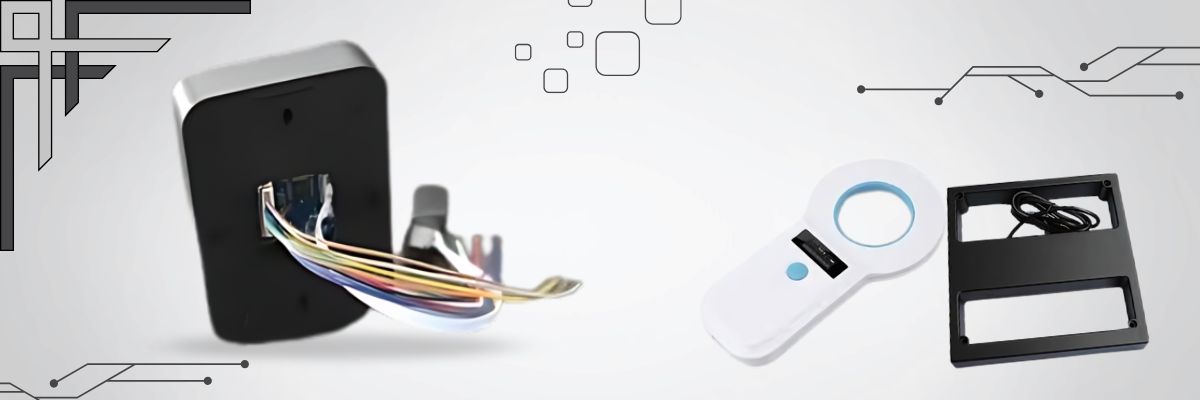Operation, Maintenance, and Service of LF RFID Readers
LF RFID readers, operating within the low-frequency band (typically 125 kHz or 134.2 kHz), play a critical role in asset tracking, animal identification, and industrial automation. When using these readers, proper setup is essential for optimal performance. The reader should be mounted securely, with attention to minimizing environmental interference such as metal objects or strong electromagnetic fields. The antenna, a key component of the reader, must be positioned appropriately to ensure a strong electromagnetic field for tag detection.
Routine operation of an LF RFID reader involves continuous signal transmission and data reception. The reader interrogates passive RFID tags within its range, capturing unique data such as identification numbers or embedded metadata. Depending on the application, the data may be transmitted via USB, RS232, Ethernet, or wireless interfaces to a host system for real-time monitoring, processing, or storage.
Maintenance of LF RFID readers is straightforward but critical to extending the device’s lifespan. Regular inspection of the reader’s housing and antenna connections should be conducted, particularly in industrial environments where dust, moisture, or mechanical vibrations may compromise performance. Cleaning the reader’s surface and inspecting for signs of wear and tear, such as cracks or loose fittings, ensures reliability over time. Firmware updates, provided by the manufacturer, should be installed promptly to maintain compatibility with evolving standards and protocols.
Service requirements generally involve troubleshooting connectivity issues, verifying signal strength, or recalibrating the antenna. In cases of failure, a comprehensive diagnostic tool or software provided by GAO RFID can aid in identifying the root cause, whether it’s related to power management, communication protocols, or tag misreads. Our technical experts offer remote or onsite support to resolve complex issues promptly, minimizing system downtime.
Workplace Standards and Regulations in the U.S. and Canada
LF RFID readers used in the United States and Canada must comply with various workplace standards and regulations. In the U.S., the devices must meet the requirements of the Federal Communications Commission (FCC) Part 15, which regulates electromagnetic emissions to prevent interference with other wireless communications. Additionally, Occupational Safety and Health Administration (OSHA) guidelines ensure that electronic equipment, including RFID readers, poses no electrical hazards in workplace environments.
In Canada, Industry Canada (IC) regulates the certification and operation of low-frequency RFID systems. The Canadian Standards Association (CSA) offers additional guidelines to ensure the safe deployment of RFID technology in industrial and commercial settings. These regulatory bodies oversee the performance and safety of RFID devices, helping to guarantee that readers operate effectively and without interference, protecting both operators and the broader radio spectrum.
GAO RFID takes these regulations seriously. We ensure that our LF RFID readers are fully compliant with FCC and IC requirements, undergo rigorous electromagnetic compatibility (EMC) testing, and meet all necessary safety standards for U.S. and Canadian workplaces. This commitment to regulatory compliance helps our clients deploy RFID systems with confidence.
Case Studies
- Industrial Asset Tracking – Chicago, USA: A manufacturing facility in Chicago implemented LF RFID readers for real-time asset tracking on its production floor. The readers, integrated with the facility’s existing PLC systems, enabled accurate tracking of machinery and tools, reducing downtime caused by misplaced equipment.
- Supply Chain Optimization – Dallas, USA: In Dallas, a logistics company deployed LF RFID readers across its warehouse network to improve inventory accuracy and streamline goods movement. The system reduced manual checks and optimized the flow of materials, enhancing the company’s ability to meet demand in real-time.
- Livestock Management – Calgary, Canada: A Calgary-based agricultural firm utilized LF RFID readers for livestock management, using the technology to track animal health data and movement across multiple farms. The system’s accuracy helped streamline reporting and ensure compliance with provincial and federal regulations regarding animal welfare and traceability.
Our products are in stock and can be shipped overnight to Continental U.S. and Canada from one of our local warehouses. If you have any questions, our technical experts can help you. Please fill out this form or email us.

